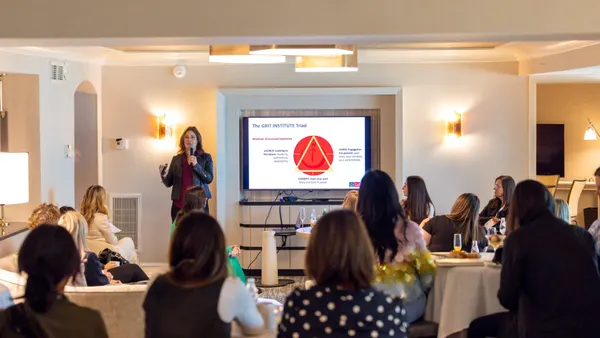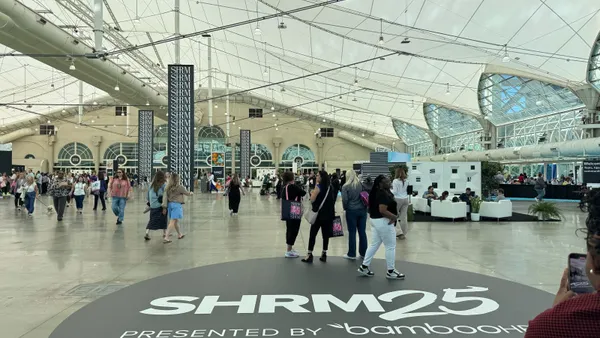Dive Brief:
- Workers in open-bench office layouts experienced more physical activity and, as a result, less stress than those in closed-in offices and cubicles, according to new research published in Occupational and Environmental Medicine. The study examined three office designs: 1) private office (completely enclosed); (2) cubicle (high-walled partitions); and (3) open bench seating (no partitions and completely visible).
- Researchers noted what's already known about the relation between office design and employees' health: office workers are at risk for lower physical activity levels, which are associated with poor health at a cost to the U.S. economy of $225 billion a year. Almost 50 million U.S. workers spend more than one-fifth of their time in office settings, which increases their risk of physical inactivity.
- Researchers concluded that there's a correlation between open office design and higher physical activity and lower stress, and that office design could be a health-promoting factor.
Dive Insight:
The trend in office design has been a transformation to open, less formal work spaces to promote collaboration and teamwork among employees — though not all studies agree that open offices may succeed in this regard. A pair of field studies conducted by Harvard University researchers saw that face-to-face communication dropped in an open-office environment, while electronic interactions increased.
However, more employers are shifting toward new designs than away. Design firm Ted Moudis Associates reported that 92% of its clients opted for open workspaces. In a 2017 interview, Colin Finley, VP of client solutions at Ideation Studio, told HR Dive that offices are abandoning the "cubical farm" model for an environment that creates positive emotions, supports new work styles, and increases collaboration and productivity; in short, the transformation is to an open office layout.
Not all employees find an open office design conducive to work. Apple employees threatened to quit their jobs over the company's new open office design in 2017, which they said lacked the private, closed-in spaces they needed for creative thinking. In a 2017 study of 2,000 high-performing employees, 58% of the respondents said they needed quiet, private workspaces for problem-solving.
Since there's conflicting views on what's the best workspace design for productivity, employers might need to incorporate elements from both open and walled-off designs into their office plans to accommodate a range of preferences among workers.












